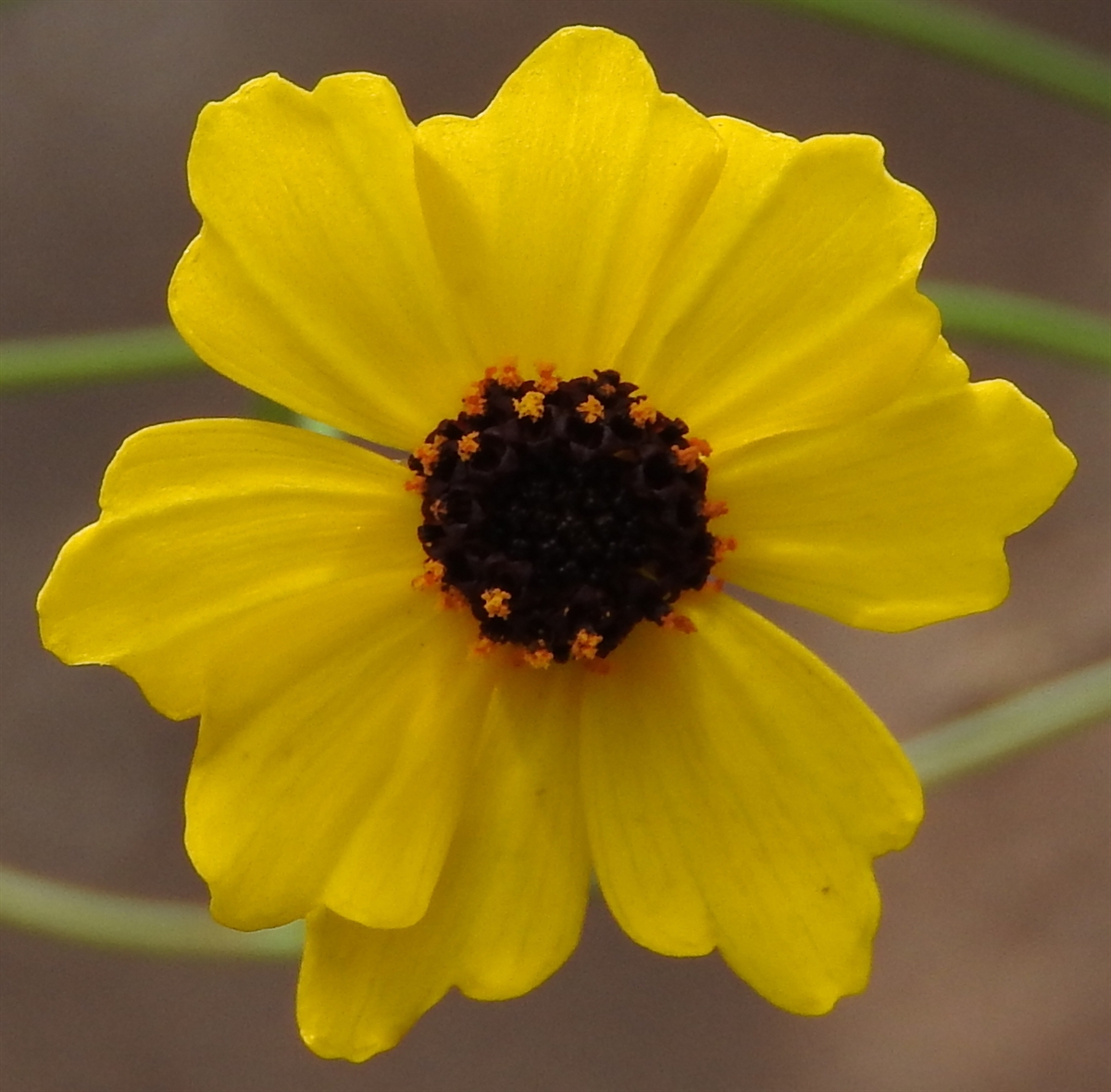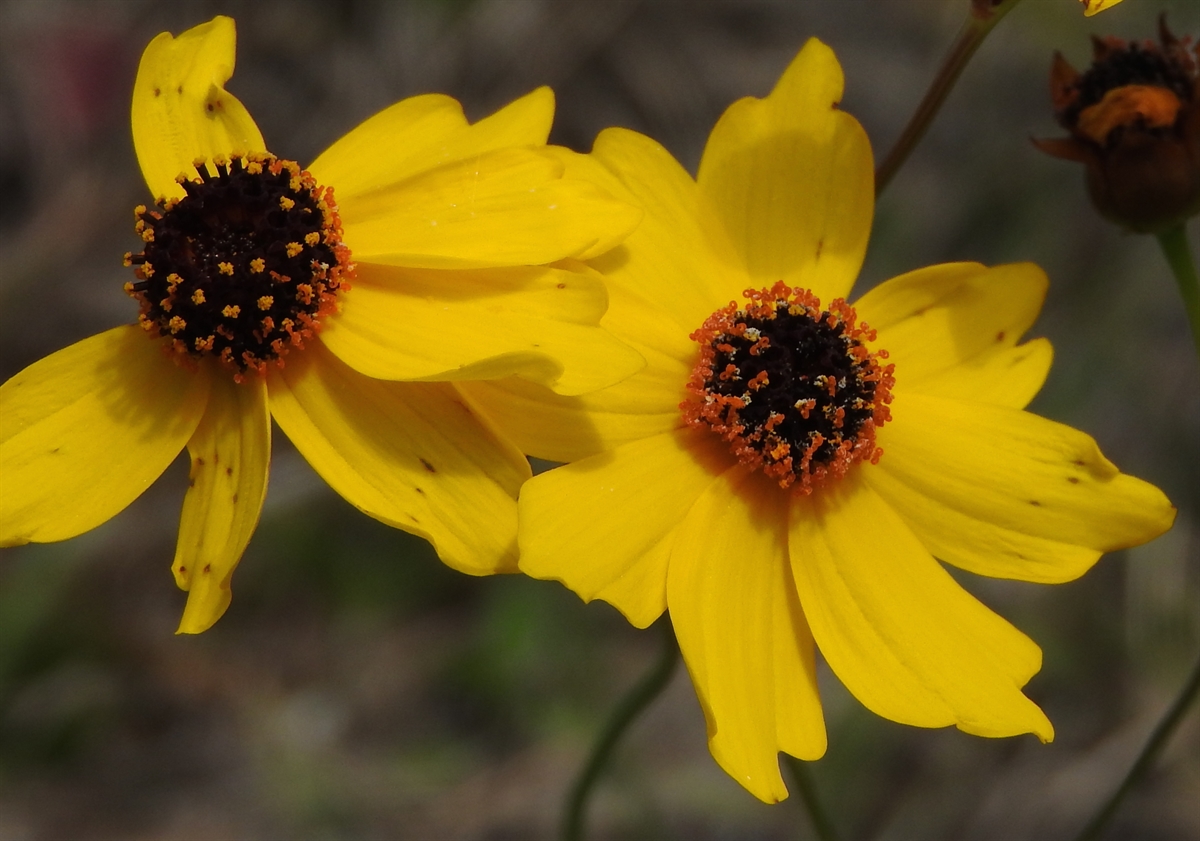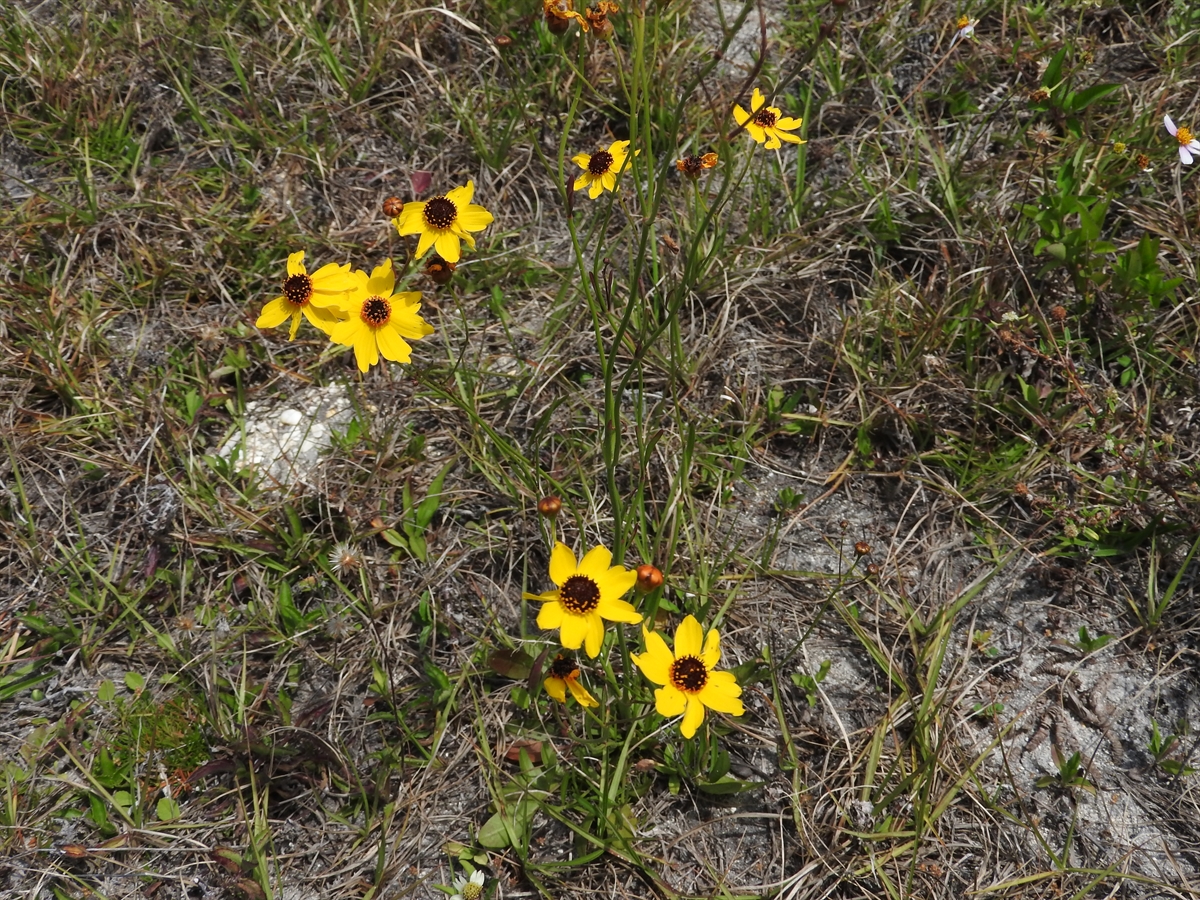Habit: Coreopsis leavenworthii is an annual or short-lived perennial to 70 cm in height when flowering. The oddly pinnately compound leaves primarily as a basal rosette but are also simple and arranged oppositely along flowering stems, to 8 cm in length. The leaflets elliptic, with an entire leaf margin and an acute leaf apex.
The actinomorphic flowers are arranged in heads. The heads are subtended by a series of involucral bracts. The calyx is modified as a ring of hairs (pappus). There are both perfect and imperfect (carpellate) flowers in the heads. The perfect (disc) flowers are in the center and the imperfect (ray) flowers are arranged around the edge of the heads. Each flower is subtended by bracts.
The imperfect flowers have 3 (fused into 1) yellow, dentate tipped, petals and no stamens. The perfect flowers have a corolla with 5 fused, brown petals. There are 5 stamens fused at their base. In both types of flowers, the ovary is inferior with a single locule but only the perfect flowers have functional ovules. The fruit is a pubescent achene at maturity that retains the modified calyx (pappus).
Habitat: Coreopsis leavenworthii in Human Altered environments (ditches, fields) and Pine Woodlands.
Distribution: Coreopsis leavenworthii has been observed in the Lucayan Archipelago on the west end of Grand Bahama. It is native to Florida and Alabama.
Medicinal/Cultural/Economic usage: Coreopsis leavenworthii is not known to be used medicinally in the Lucayan Archipelago.
It has been used in the horticultural industry for its colorful flowers.


